One of the most important things to explore in Hanoi is the Temple of Literature Hanoi, also known as Van Mieu – Quoc Tu Giam. This historical and cultural place is also the first university in Vietnam, built in 1070 to honor Confucius, his followers, and Vietnam’s scholars and wise individuals. The temple showcases traditional Vietnamese architecture with a well-planned layout, graceful pavilions, ornate gates, and ancient stelae. It also reflects the Vietnamese people’s deep respect for education and literature, highlighting their aspirations for moral excellence and national prosperity.
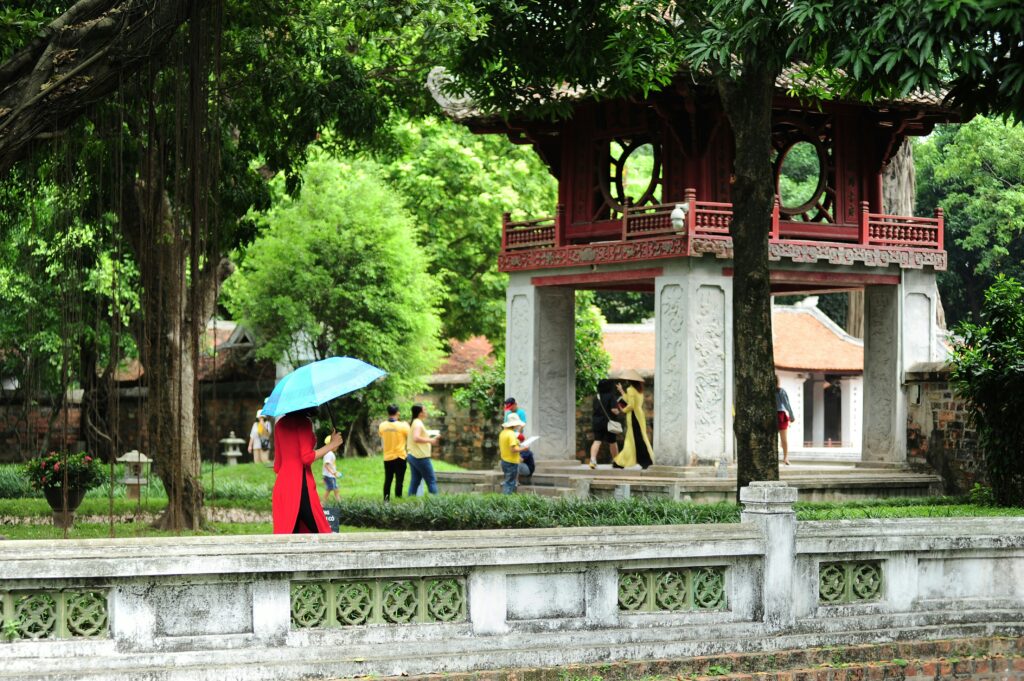
This article takes a closer look at the temple’s history, architecture, cultural significance, and provides some practical tips for visitors. It also shares interesting facts and suggestions for an enjoyable visit to this remarkable attraction.
1. The Temple of Literature’s brief history
The Temple of Literature, or Van Mieu, holds a rich history dating back to its establishment during the reign of Ly Thanh Tong in 1070. Its primary purpose was to pay homage to and commemorate Confucius, embodying the Confucian principles that were highly esteemed during the Ly dynasty.

In 1076, Quoc Tu Giam, the Temple of Literature’s rear section, was erected, transforming it into the Royal Academy of Vietnam. This academy was exclusively reserved for the elite, including princes, nobles, and scholarly officials. Under the rule of King Tran Thai Tong in 1253, Quoc Tu Giam underwent expansion and evolved into the National Academy, welcoming exceptionally talented commoners into its educational fold.
During the reign of King Tran Minh Tong, Chu Van An was appointed as the head of Quoc Tu Giam, a position comparable to a modern-day principal. He played a pivotal role in instructing the princes. Following Chu Van An’s demise in 1370, King Tran Nghe Tong paid tribute to him at Van Mieu, alongside honoring Confucius.
In 1484, King Le Thanh Tong initiated the installation of stelae, commemorating successful scholars from the year 1442 onward. These stelae, placed on the backs of turtles, symbolized the longevity and intellect of the Vietnamese people.
The year 1802 marked a change in Van Mieu’s nomenclature, transitioning from “Van Mieu Bac Thanh” to “Van Mieu Hanoi.” Quoc Tu Giam later became an educational institution for Hoai Duc province and eventually evolved into Mieu Khai Thanh, a place dedicated to honoring Confucius’ parents.
Despite enduring substantial damage during the French resistance war (1946-1954), Van Mieu has undergone numerous renovations, solidifying its status as a significant historical and cultural site. Today, it stands as a revered destination in the capital, welcoming visitors from both within the country and abroad.
2. Outstanding features of the Temple of Literature in Hanoi
The Temple of Literature, situated on Quoc Tu Giam Street, is a 2.5-hectare complex with distinct features in each of its five courtyards, separated by walls.
2.1. The Gate
The entrance to the Temple of Literature is located on Quoc Tu Giam Street, accessible through the main gate known as Van Mieu Mon. This gate grants entry to the expansive 2.5-hectare site, organized into five distinct courtyards, each separated by walls.
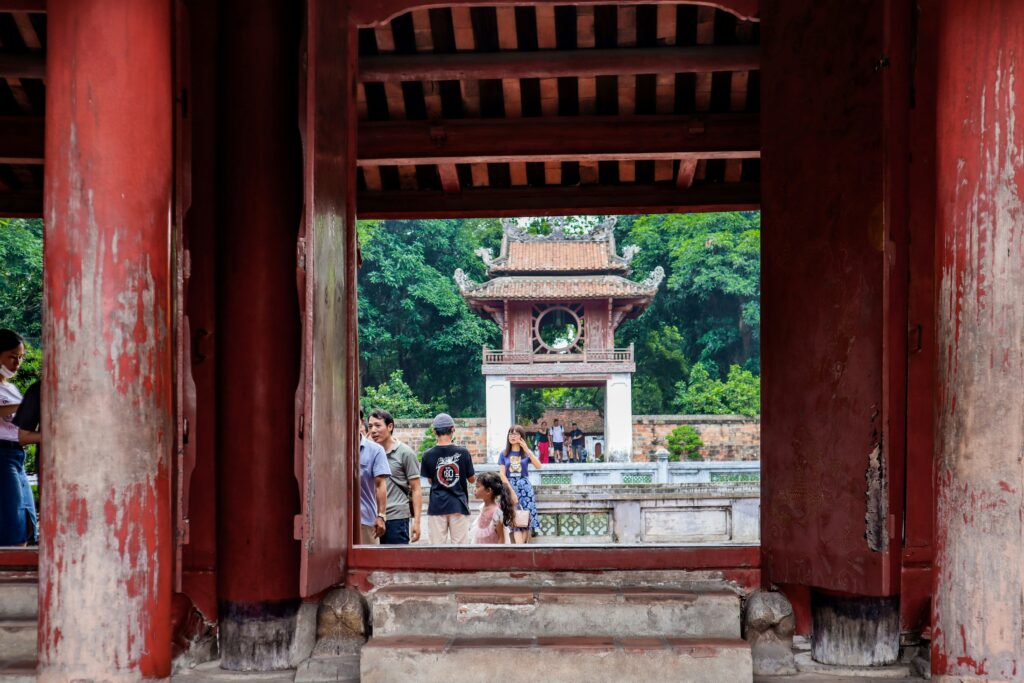
2.2. Courtyard and Pavilion
In the first two courtyards, there are no buildings. The entrance to the Temple of Literature is found in the first courtyard, leading to The Great Middle Gate with two smaller entrances on either side. This area features two small ponds and three paths, with the middle one reserved for the king and his royal family, while the two smaller paths are for students and visitors.
Above the gate between the second and third courtyards stands the picturesque Khue Van Cac, or Pavilion of the Seven Stones. This wooden pavilion served as a space for scholars to recite poems and engage in literary pursuits. Notably, it is a national symbol featured on the 100,000 Vietnamese Dong banknote.
2.3. The Pond
The third courtyard houses a central pond known as Thien Quang Tinh, or the Source of the Heavenly Light. Symbolizing a mirror absorbing the universe’s best essence, the pond aided students in self-reflection and preparation before entering the sacred inner area.
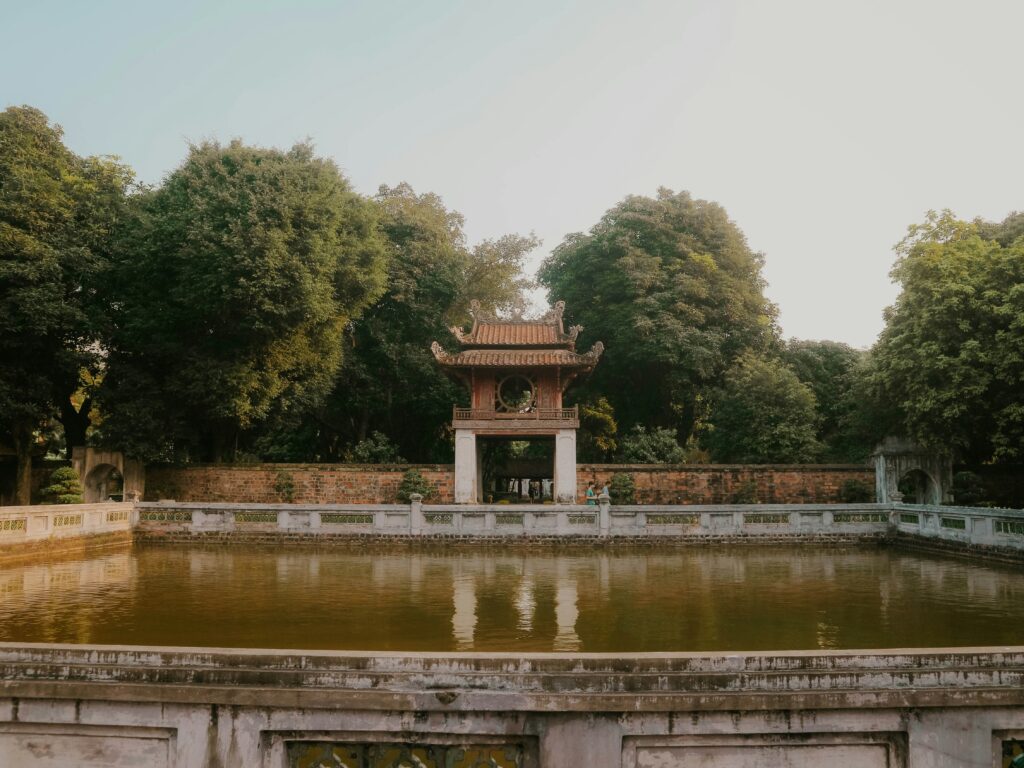
Flanking the garden are 41 stelae mounted on stone turtles, serving as memorials to those who successfully passed national exams. The 82 stelae, initiated by Emperor Le Thanh Tong in 1484, contain details such as names, birthplaces, and merits of 1,306 PhD graduates. While students used to consider it lucky to rub the turtles’ heads before exams, touching them is now forbidden to preserve their integrity.
2.4. Gate of Great Success
In the fourth courtyard stands the primary Temple of Literature, featuring a statue of Confucius and his four most devoted disciples. This area remains a significant space for students making offerings, especially during exam periods.
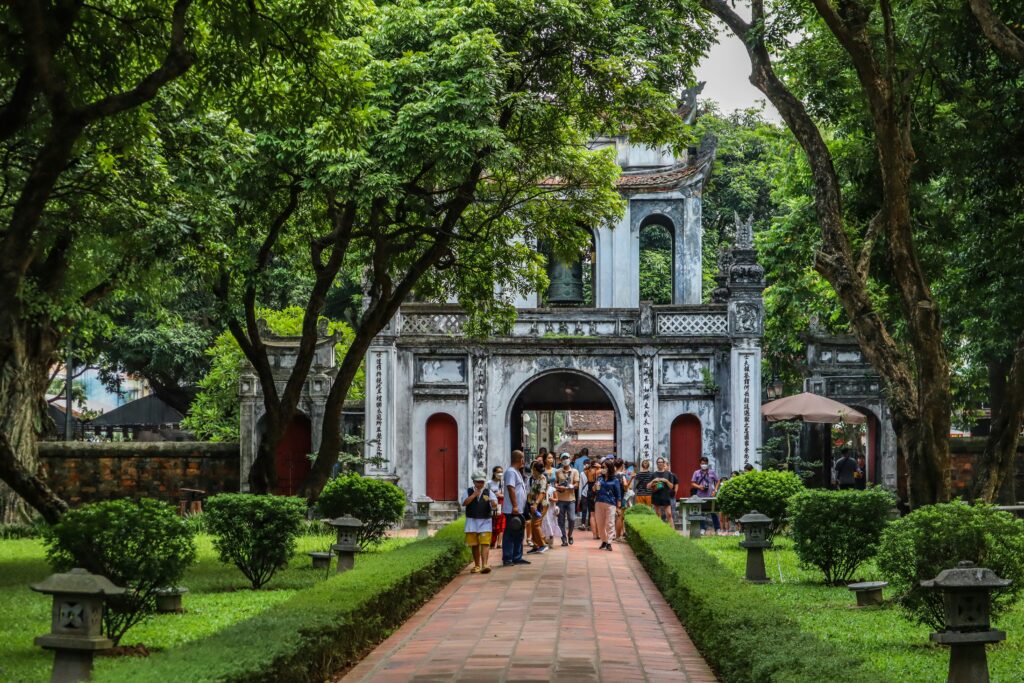
2.5. The Imperial Academy
The last courtyard once housed a library and academy, but it was destroyed during the First Indochina War in 1946. Initially built in 1076 with the aim of educating the country’s high officials, the Imperial Academy was reconstructed by the government in 2000. It now serves as an exhibition space showcasing the old uniforms worn by scholars, among other historical artifacts.
3. Guide on Moving and Visiting the Temple of Literature
Temple of literature Hanoi is located at 58 Quoc Tu Giam Street, Dong Da District, Hanoi, Vietnam. Situated in the northern part of Dong Da District, it is only 3km away from Hoan Kiem Lake and 1 km south of the Ho Chi Minh Mausoleum. Getting here is convenient through various means of transportation such as buses, taxis, motorcycles, or, if you’re in the Old Quarter, you can take a cyclo ride as the two locations are approximately 2 km apart.

To warmly welcome visitors, Temple of literature opens its doors every day of the week, starting from 7:30 AM until 5:30 PM. During the winter season, the opening time may be delayed by approximately 30 minutes.
The entrance fee for tourists, adults, starts from 20,000 VND per person. For children, students, and university students, the ticket price is only 10,000 VND per person. Once inside, visitors can explore numerous points of interest within the Temple of Literature and purchase handmade products as souvenirs to gift to friends and family.
4. Some Nearby Attractions to the Temple of Literature:
While visiting the historical complex of the Temple of Literature in Hanoi, tourists also have the opportunity to explore Van Mieu Mon, the Three-Gate entrance to the monument area, constructed with three doors and two floors.
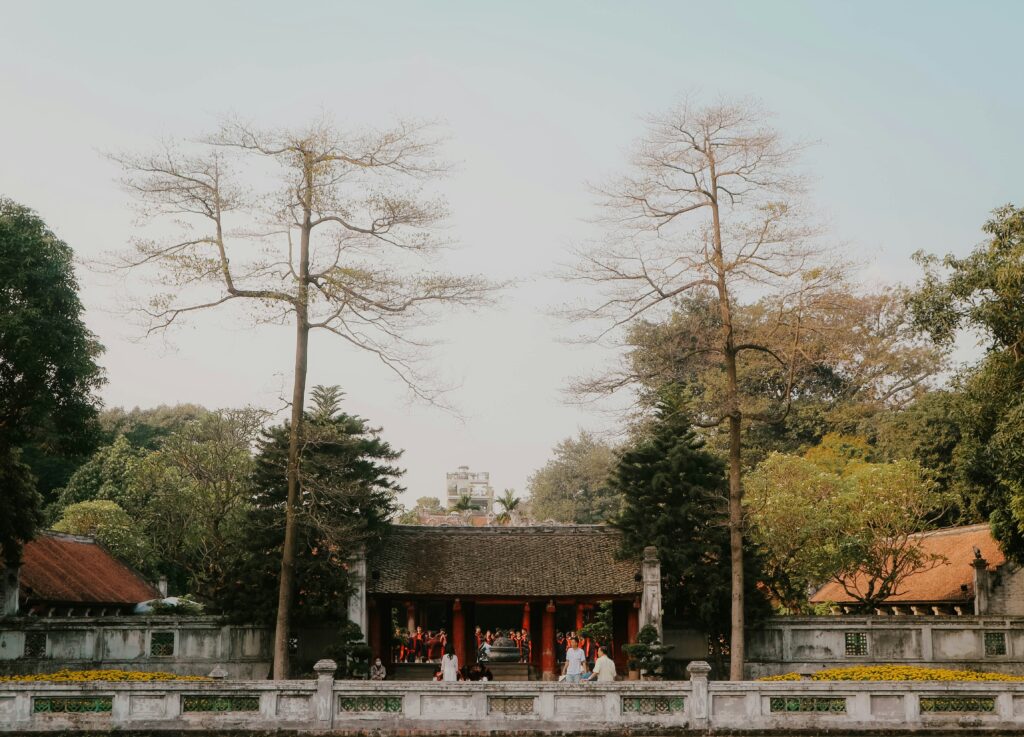
Ho Van, also known as Minh Duong Lake or Giám Lake, lies in front of the Temple of Literature’s gate. At the center of the lake is Kim Chau Mound, featuring the Thuy Duong Pavilion, where ancient scholars held poetry recitals and literary discussions.
Dai Trung Mon is considered the second gateway to the Temple of Literature, distinguished by its ancient architectural beauty. Surrounding Dai Trung Mon are numerous trees and a large lake, providing a tranquil atmosphere amidst the bustling and vibrant capital.
Khue Van Cac is one of the unique structures within the Temple of Literature complex. Designed as a square-shaped building with eight roofs, notably four upper and four lower roofs, it reaches a total height of nearly 9 thước.
5. Conclusion
After the Nguyen Dynasty, the Temple of Literature in Hanoi was recognized by UNESCO as a World Memory Heritage Site in 2011. The site was also nominated and designated as a national treasure in 2015. It not only stands as a historical relic but also symbolizes the tradition of filial piety and serves as a spiritual monument for seeking luck and success in exams for countless scholars.
In every journey introducing visitors to the capital city of Hanoi, Jackfruit Adventure strives to bring customers to this ideal destination to gain a deeper understanding of Vietnam’s history and its people over thousands of years through a Vietnam Cycling Tour Ho Chi Minh and Hanoi city




